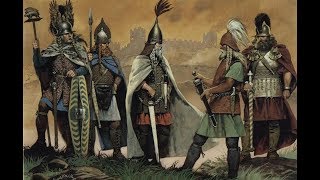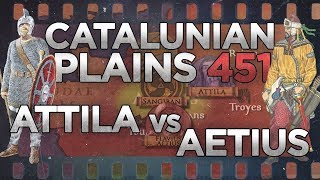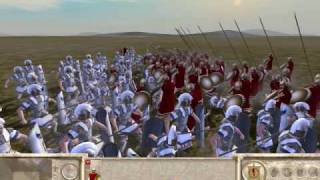Sunday, 02 November, 2025г.
















Где искать: по сайтам Запорожской области, статьи, видео ролики
пример: покупка автомобиля в Запорожье
5-6 Barbarians - The Savage Goths
The Goths were a heterogeneous East Germanic tribe. The historian Jordanes claims that the Goths originated in semi-legendary Scandza, believed to be located somewhere in modern Götaland (Sweden), and that a Gothic population crossed the Baltic Sea before the 2nd century. Jordanes also states that the Goths gave their name to the region they colonized, Gothiscandza, which is believed to be the lower Vistula region in modern Pomerelia (Poland). The archaeological Wielbark (Willenberg) culture is associated with the arrival of the Goths and their subsequent agglomeration with the indigenous population. However, the reliability of Jordanes, who wrote in the 6th century, is disputed, and there is also no archaeological evidence for a substantial emigration from Scandinavia. From the middle of the 2nd century onward, groups of Goths migrated to the southeast along the River Vistula. They eventually reached Scythia at the coast of the Black Sea in modern Ukraine, Romania and Moldova, where they left their archaeological traces in the Chernyakhov culture. In the first attested incursion in Thrace the Goths were mentioned as Boranoi by Zosimus, and then as Boradoi by Gregory Thaumaturgus. During the 3rd and 4th centuries, the Scythian Goths were divided into at least two distinct groups, the Thervingi and the Greuthungi, separated by the Dniester River. They repeatedly attacked the Roman Empire during the Gothic Wars. In the late 4th century, the Huns invaded the Gothic region from the east. While many Goths were subdued and integrated into the Hunnic Empire, others were pushed towards the Roman Empire. The Goths were converted to Arian Christianity by the Arian half-Gothic missionary Wulfila, who found it necessary to leave Gothic territory for Moesia (Bulgaria) with his congregation. Here he translated the Bible into Gothic, devising a script for this purpose. In the 5th and 6th centuries, the Goths separated into two tribes, the Visigoths and the Ostrogoths. Both established powerful successor states of the Western Roman Empire. In Italy the Ostrogothic Kingdom established by Theodoric the Great was defeated by the forces of the Eastern Roman Empire after the Gothic Wars. In Hispania, the Visigothic Kingdom, converted to Catholicism by the late sixth century, survived until the early eighth century, when it fell to Islam in the Muslim conquest. The Gothic language and culture disappeared, with the exception of fragments in other cultures. In the 16th century a small remnant of a Gothic dialect was described as surviving in the Crimea.
Теги:
german asia minor pomerelia willenberg baltic sea scythia black sea romania noldovia roman empire ostrogoths visigoths spain
Похожие видео
Мой аккаунт


 У вашего броузера проблема в совместимости с HTML5
У вашего броузера проблема в совместимости с HTML5


